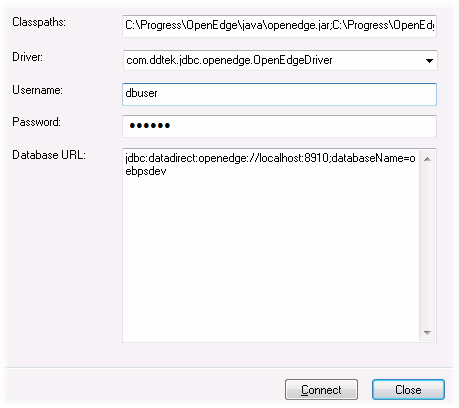


In other cases, OpenAccess can deconstruct the query and reconstruct the results to support additional ODBC features. With almost 99% of the coding already taken care of, wrapping a JDBC driver (or for that matter, any REST API) with an ODBC layer can be done in days, if not hours.Īnd the best part of OpenAccess is that queries can be passed through as long as the underlying API can handle a particular query.

With the OpenAccess SDK SQL engine, you can very easily build an ODBC wrapper. Progress DataDirect OpenAccess SDK can help create the connections businesses need to make full use of their preferred BI and analytics tools-even when they use different protocols. This provides connectivity as needed, bridging the gap between your analytics and data integration tools and your data sources. In such cases, enterprises can deploy an ODBC-JDBC bridge (also known as an ODBC wrapper) to make the JDBC-compliant database look like an ODBC data source. Not to mention it may not even be all that cost-effective to build and maintain in the long run. Recreating an ODBC layer at the database level or a JDBC support at the application may not be in your control. When critical tools only support one standard of connectivity, it creates time-consuming problems for developers. And in fact, that's one of the major reasons a lot more analytics tools and BI applications support ODBC rather than JDBC. As you know, JDBC was written for the Java environment whereas ODBC was designed to be language-agnostic. However, JDBC and ODBC don’t always “talk” to each other. This is key to not only empowering informed decision-making, but also saving time, money and other critical development resources. Using these standards enables applications to send SQL statements to different data sources without having to code them multiple times. ODBC and JDBC are the most popular SQL standards for accessing data and running queries. That makes being able to explore, analyze, report on and share all of your data in any business intelligence tool critical to capitalizing on the wealth of opportunities data provides. Making great, data-driven business decisions relies on having the right data. A connector SDK can help bridge the JDBC-ODBC gap and speed up the delivery of critical data connectivity. When your favorite BI and analytics tools only support one standard of connectivity, it creates time-consuming work for developers.


 0 kommentar(er)
0 kommentar(er)
